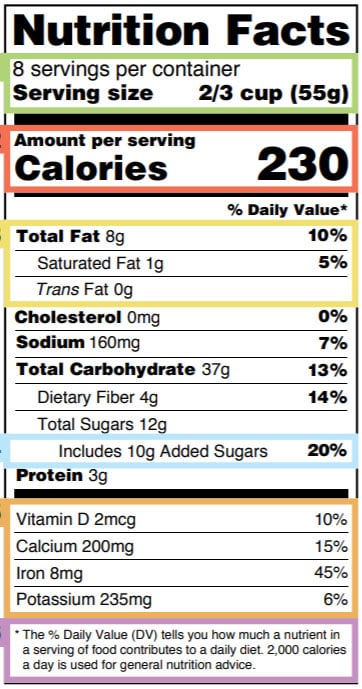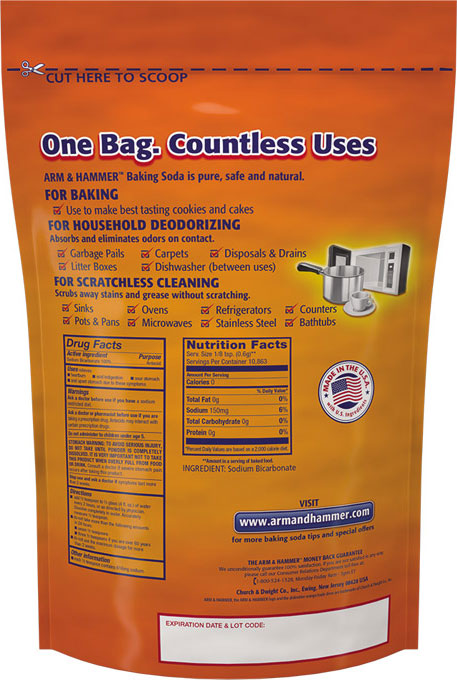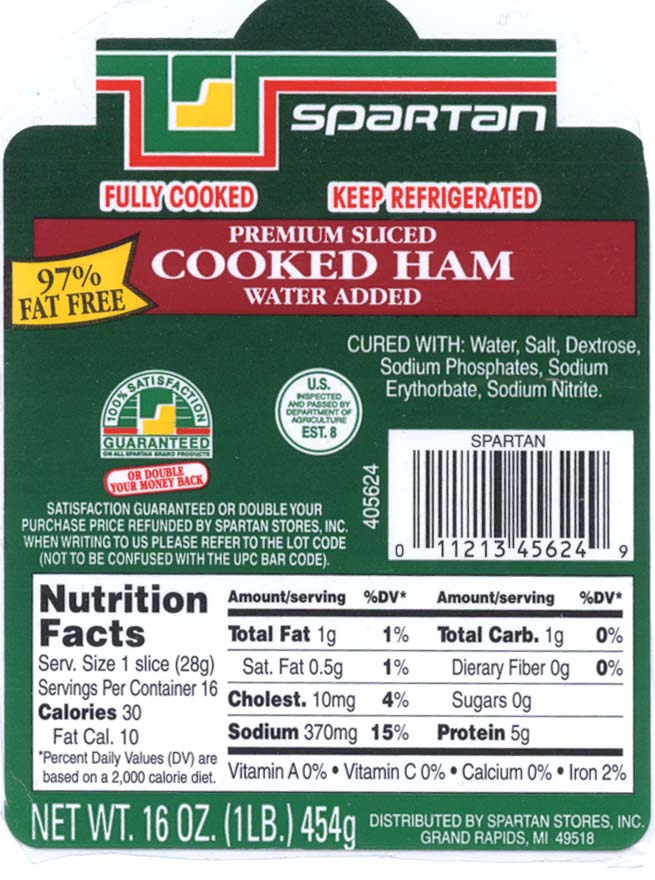40 dv on food labels
Percent daily value - Canada.ca The % DV is found on the right-hand side of a nutrition facts table. It is a guide to help you make informed food choices. It shows you if the serving size has a little or a lot of a nutrient: 5% DV or less is a little 15% DV or more is a lot This applies to all nutrients with a % DV. Food Labels | CDC All the numbers on this label are for a 2/3-cup serving. This package has 8 servings. If you eat the whole thing, you are eating 8 times the amount of calories, carbs, fat, etc., shown on the label. Total Carbohydrate shows you types of carbs in the food, including sugar and fiber. Choose foods with more fiber, vitamins, and minerals.
› nutritionsource › food-labelUnderstanding Food Labels | The Nutrition Source | Harvard T ... The information on food labels is intended to help consumers become savvy about their food choices. The front, back, and sides of a package are filled with information to inform us what the food contains and to provide guidance in making healthier selections of processed foods. ... 5% DV or less of a nutrient per serving is considered low. If ...

Dv on food labels
How To Read Food and Beverage Labels - National Institute on Aging Or you can call the U.S. Department of Agriculture's Food and Nutrition Information Center at 301-504-5414. Understanding percent Daily Value (% DV) The percent Daily Value (% DV) tells how much a nutrient in a serving of the food or beverage contributes to a total daily 2,000-calorie diet. Percentage of Daily Values Based on a 2000 Calorie Diet On a 2,000-calorie diet, the recommended intake of total fat is 65 g, saturated fat is 20 g and cholesterol 300 mg per day. If a food contains 20 percent of your daily value for saturated fat, it contains 4 g of saturated fat per serving. You can use the percentage of daily value on a food label to help you limit your intake of foods high in ... › media › 81606Food Labeling Guide - FDA 4. table of contents 1. i ntroduction 4 2. b ackground 4 3. g eneral f ood l abeling r equirements 5 n ame of f ood 7 juices 5. n et q uantity of c ontents s tatements 14 6. i ngredient l ists 17 ...
Dv on food labels. Daily Value and Percent Daily Value: Changes on the New Nutrition and ... Facts Labels Daily Value vs. % Daily Value First, let's look at how Daily Value (DV) and Percent Daily Value (%DV) work together. ... Use %DV to determine if a serving of the food is high or low ... Daily Values (DVs) - National Institutes of Health Recommended intakes of nutrients vary by age and sex and are known as Recommended Dietary Allowances (RDAs) and Adequate Intakes (AIs). However, one value for each nutrient, known as the Daily Value (DV), is selected for the labels of dietary supplements and foods. A DV is often, but not always, similar to one's RDA or AI for that nutrient. What does percent Daily Value (DV) on food labels mean ... A food item with a 5 percent DV means 5 percent of the amount of fat that a person consuming 2,000 calories per day would eat. Remember, percent DVs are for the entire day -- not just for one meal or snack. You may need more or less than 2,000 calories per day. For some nutrients you may need more or less than 100 percent DV. SecondsCount.org The Complete Guide to Recommended Daily Intakes, Daily Values, and ... The Daily Value (DV) builds on the RDI, but creates a number meant for everyone that can be put on the labels of food products. In short, the RDI is more specific and the DV is more general. If you are confused, don't worry, this article will clarify it for you, and give you a table with all the numbers. Table of Contents Introduction
Nasty hotel - Review of Centro Hotel National Frankfurt ... Centro Hotel National Frankfurt City: Nasty hotel - See 418 traveler reviews, 173 candid photos, and great deals for Centro Hotel National Frankfurt City at Tripadvisor. The Basics of the Nutrition Facts Label A food item with a 5% DV of fat provides 5% of the total fat that a person who needs 2,000 calories a day should eat. ... but it also is important to know about the additional nutrients on the Nutrition Facts label. Protein: A percentage Daily Value for protein is not required on the label. Eat moderate portions of lean meat, poultry, fish ... Food Labeling Requirements - LabelCalc Plugging in our numbers would result in approximately a 13% daily value percentage of Vitamin D expressed in mcg for correct food label formatting: % DV = (2.5 mcg ÷ 20 mcg) × 100 = 13%. Vitamin E. As I'm sure you can guess, Vitamin E and it's various forms were also previously expressed in international units on a food label. Daily Value on the New Nutrition and Supplement Facts Labels 5% DV or less of a nutrient per serving is considered low. 20% DV or more of a nutrient per serving is considered high. More often, choose foods that are: Higher in dietary fiber, vitamin D,...
› regulatory-information › search-fdaGuidance for Industry: Food Labeling Guide | FDA Questions concerning the labeling of food products may be directed to the Food Labeling and Standards Staff (HFS-820), Office of Nutrition, Labeling, and Dietary Supplements, Center for Food ... What Does "% Daily Value" Mean on a Food or Supplement Label? Generally, the Daily Values chosen for nutrient labels are based on a 2,000-calorie diet for healthy adults — except for when they aren't. Sometimes — particularly when it comes to critical nutrients — they reflect the needs of a population sub-group that requires more. For example, the RDA for iron is 8 mg for men and 18 mg for women. Your Guide to the New Food Label | National Kidney Foundation The Nutrition Facts Label helps you understand the nutrients a food product contains, and the Nutrition Facts Table lists all the items required by the law. Food labels have percent daily values listed for a set group of nutrients based on the Food and Drug Administration (FDA) recommended 2000 calorie diet. Guidance for Industry: Guide for Developing and Using Data ... The ratio between a laboratory finding of 4.8 mg vitamin C/serving (i.e., 8% DV) and the label value of 10% DV would be calculated as follows: (8% / 10%) x 100 = 80% or (4.8 mg / 6 mg) x 100 = 80%...
eCFR :: 21 CFR Part 101 -- Food Labeling § 101.1 Principal display panel of package form food. The term principal display panel as it applies to food in package form and as used in this part, means the part of a label that is most likely to be displayed, presented, shown, or examined under customary conditions of display for retail sale. The principal display panel shall be large enough to accommodate all the mandatory label ...
What is the difference between the RDA and the DV for vitamins and ... The DVs (Daily Values) are set by the FDA. On food and supplement labels, you will find the "%DV" listed for vitamins and minerals which are required by law to be listed.
How To Read Food Labels: Understanding the Basics Food labels list Percent Daily Values (%DV) data to provide a helpful reference point. The %DV tells you what percentage of your daily recommended intake of a particular nutrient is contained within one serving of the product. Use this information to judge whether this product is providing you with appropriate amounts of certain nutrients.
Food Labels Flashcards | Quizlet Percent Daily Value (%DV) 1. the percentage of how much of a particular nutrient or fiber a person should consume based on a 2000-calorie diet 2. manufacturers are required to list the %DV of only four vitamins and minerals—namely, vitamin A, vitamin C, calcium, and iron—unless the food is enriched or fortified with others
FDA Rounding Rules for Your Food Label - LabelCalc Less than 0.5 grams, round down to 0 (i.e. 0.48 becomes 0). Between 0.5 and 5 grams, round to the nearest half gram (i.e. 4.38 rounds to 4.5). 5 grams and above, round to the nearest whole gram (i.e. 78.73 rounds to 79). * Note that cholesterol is rounded the same way, but the unit is milligrams rather than grams.
Home | Dietary Supplement Label Database (DSLD) | NIH ... Products in the DSLD are Classified by 10 Product Types Use the chart to learn how many products of each type are in the DSLD. To search by a specific type, click on the product type below. 0 10,000 20,000 30,000 40,000 50,000 Number of Labels Other Combinations Botanical Non-Nutrient/Non-Botanical Vitamin Botanicals with Nutrients
The Lows and Highs of Percent Daily Value on the Label 5% DV or less of a nutrient per serving is considered low. 20% DV or more of a nutrient per serving is considered high. More often, choose foods that are: Higher in dietary fiber, vitamin D,...
How to Calculate Percentage DV for a Nutrient - SF Gate Divide the given amount of the nutrient by the appropriate recommended daily value found on the FDA guide. So if your item contains 300 milligrams of calcium per serving, divide 300 by 1,000, which...
How to Understand and Use the Nutrition Facts Panel on Food ... The main or top section (see #1-5 on the sample nutrition label below), which contains product- ... %DV. Serving Size. 1 cup (228g). 2 cups (456g). Calories.8 pages
The Vegetarian Resource Group Blog - VRG The new labels give both the %Daily Value and the actual amount of the nutrient in a product. For example, the Nutrition Facts label for 1 cup serving of one brand of fortified soy milk says that it has 450 mg of calcium, 30% DV (note that this %DV is rounded since 390 mg is actually 34% of 1300 mg).
How to Calculate % of Daily Value on Food Labels | livestrong Step 1 Find the nutrient amount on the food label. Step 2 Look up the total daily recommended amount in the USDA Dietary Guidelines. Step 3 Divide the nutrient amount by the total daily recommended value. Step 4 Multiply by 100. Things You'll Need United States Department of Agriculture (USDA) Dietary Guidelines Food label Calculator Tip
What Is the Difference Between DRI & Daily Value ... This number, called the daily value or DV, is based on the amount of each nutrient needed for a 2,000-calorie-a-day diet. You won't find the daily value on the nutrition facts label. Instead, it's...
FDA Food Label Nutrients Without a DV - Weight Loss Center This is because it hasn't established any specific guidelines about how much a person can consume for optimal health. Food manufacturers are required to give a percentage of the daily value for protein if a product is labeled as being high in protein, or if it's specifically made for children or infants under the age of four. Avoid These...
The New Food Label: What RDs Need to Know - Today's Dietitian New to the Label. For the first time since packaged foods began bearing food labels, "Added Sugars" and % DV for added sugars must be labeled. Added sugars in grams per serving will appear on the label as "Includes XX g Added Sugars" indented directly below "Total Sugars.". "We applaud the FDA's efforts to better educate ...











Post a Comment for "40 dv on food labels"